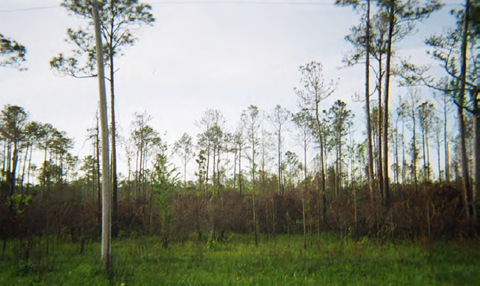The ecosystem restoration mission area focuses on restoring degraded aquatic ecosystem structures, improving function and dynamic processes to a more natural condition, and employing system-wide watershed approaches to problem solving and management for ecosystem restoration projects. Our principal ecosystem restoration focus is on ecological resources and processes that are directly associated with, or directly dependent upon, the hydrological regime of the ecosystem and watershed(s).
Franklin Creek Ecosystem Restoration
Hurricane Katrina (2005) caused rising waters in the Escatawpa River in Jackson County, Mississippi, near the Alabama-Mississippi state line resulting in large volumes of storm surge introduced into the system. This caused Franklin Creek to overflow its banks, which inundated numerous residences within the community due to the low ground elevations in the area. The project was authorized as a nonstructural coastal storm risk management and ecosystem restoration project under the MSCIP Comprehensive Plan to ensure the stability of the Grand Bay Pine Savannahs, enhance the productivity of the Grand Bay Marshes, and restore oyster reef habitat that once existed. Future work will include the restoration of hydrology and native hydrology by removing ditches, excavating and removing roadbeds, installing culverts under U.S. Highway 90, controlling non-native species, and controlled burning to restore 149 acres with critical pine savannah wetlands, which provide floodwater retention, groundwater recharge, and water purification. These elements will provide an increase of 516 average annual functional habitat units and restore the natural hydrology of the area. Risk reduction benefits would also extend from the removal of approximately 30 residential structures from the floodplain.

Wet pine Savannah habitat south of Old Stage Road. (Franklin Creek)
Bayou Caddy Aquatic Ecosystem Restoration
Bayou Caddy was authorized as a Aquatic Ecosystem Restoration project under MSCIP Interim Report. The project is an active dredged material placement site that uses a living shoreline approach to create salt marshes and restore wetland habitat. The dredged material placement and salt marsh restoration site is confined with geotubes. Prior to recent upgrades in 2013, there had been significant damage to the tubes (i.e., shifting and elevation loss) that lowered the site’s functionality. Specifically, the predominant wave induced current and sediment transport resulted in inadequate containment of the dredged material used for salt marsh substrate. The primary damage to the site was during Tropical Storm Lee in 2011, with additional damage from Hurricane Isaac in 2012. The tropical storms pushed the sand fill to the north end of each tube, packing and swelling that end while leaving the other end under-filled. Even during non-storm conditions, additional shifting of the geotubes occurred. As a result, USACE, replaced the geotube containment dike in 2013 and constructed an offshore breakwater to reduce wave energy in its lee. The intent is for the breakwater to buffer the geotube structure during critical water level and wave conditions for containment purposes and provide an additional level of erosion control for the restored wetlands after the geotubes have degraded.

Bayou Caddy Aquatic Ecosystem Restoration Site
Deer Island, Mississippi Aquatic Ecosystem Restoration Project
Located in the Mississippi Sound, Deer Island is a narrow, four-and-a-half-mile-long landmass that buffers the City of Biloxi from wind and wave energy. However, past coastal storms and hurricanes including Hurricane Katrina (2005) breached parts of the island, reduced elevations, eroded the beach, and impaired forested areas. The purpose of the Deer Island project is to restore the island and create long-term beneficial use capacity for material dredged from the nearby Biloxi Harbor Navigation Project. Additionally, the project will minimize the fracturing of biodiversity, and result in an additional 400 acres of highly productive estuarine wetlands, restored beach and dune habitat, reduced coastal erosion, and restoration of the coastal maritime forest.
Restoration elements include the extension of the southeast island to a near 1850 footprint, restoration of island elevations and hydrology in existing marshes, and restoration of the maritime forest footprint on the island. In addition, the project is evaluating breakwater features that can enhance economic and habitat benefits that include reef habitat for fish and oysters and reduce wave energy in the lee to soften the effects of normal wave erosion of the island as well as provide expanded areas in the lee that can support the State’s off bottom oyster aquiculture industry. Overall, the project once complete is estimated to produce an increase of 2,125 average annual functional habitat units. The city of Biloxi will also regain a stronger buffer from storm events, an area better suited for recreation, an increase in related business opportunities for the local community, and a cost-effective and environmentally acceptable beneficial use site for placement of dredged material. 
Deer Island, Mississippi Aquatic Ecosystem Restoration Site